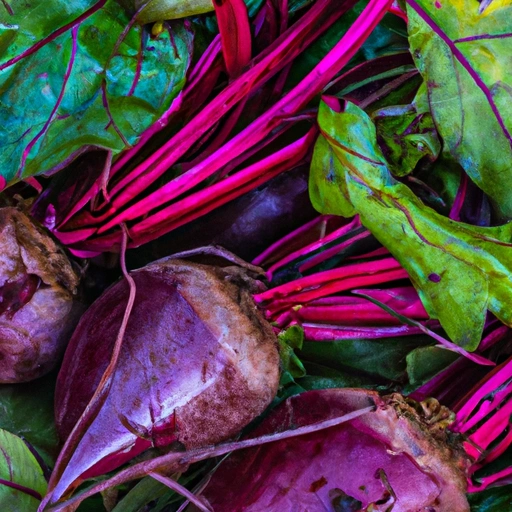Beetroot
Description

Beetroot, often simply called 'beets,' is the taproot portion of the beet plant, known scientifically as Beta vulgaris. It is known for its deep purple color, though it can also be white or golden. Recognized for its sweetness and earthy flavor, beetroot is consumed in various forms around the world, from raw or pickled to cooked or juiced. It is a versatile ingredient that can be utilized in both sweet and savory dishes. Beetroot is also valued for its high concentration of essential vitamins, minerals, and antioxidants.
Common uses
Beetroot is used globally in salads, soups, side dishes, and even desserts. It can be roasted, boiled, steamed, or eaten raw. Beet juice is a popular health drink, and beetroot slices are commonly pickled for a tangy condiment or snack. In Eastern Europe, beetroot is a crucial ingredient in borscht, while in Australia, it is often found in burgers.
Nutritional value
Calories
Beetroot has approximately 43 calories per 100 grams (3.5 oz).
Protein
It contains about 1.6 grams of protein per 100 grams (3.5 oz).
Fat
Beetroot is low in fat, with around 0.2 grams per 100 grams (3.5 oz).
Carbohydrates
It has about 10 grams of carbohydrates per 100 grams (3.5 oz), of which 7 grams are sugars.
Vitamins
Beetroot is a good source of folate (vitamin B9) and contains vitamin C and small amounts of other B vitamins.
Minerals
Beetroot is rich in minerals such as potassium, iron, and manganese.
Health benefits
Beetroot is associated with numerous health benefits, such as lowering blood pressure, improving athletic performance, and supporting brain health. Its pigments, called betalains, have been studied for their anti-inflammatory and antioxidant properties.
Potential risks
While beetroot is generally considered safe for most people, it can cause beeturia, a harmless condition where urine turns pink or red. Overconsumption may lead to kidney stones in susceptible individuals due to its oxalate content.
Common recipes
Common recipes featuring beetroot include salads, such as beetroot and goat cheese salad, soups like borscht, and roasted beetroot as a side dish. It is also used in smoothies and desserts, such as beetroot chocolate cake.
Cooking methods
Beetroot can be roasted, boiled, steamed, or sautéed. It can also be consumed raw, grated into salads or turned into a juice.
Pairing with other ingredients
Beetroot pairs well with flavors such as citrus, cheese (especially feta and goat cheese), nuts, and herbs like dill and parsley. It also complements meats like pork and duck.
Summary
Beetroot is a nutritious and versatile ingredient that brings a vibrant color and a sweet, earthy flavor to a wide array of dishes. It is celebrated for its health benefits and has been a valued food item since ancient times. Beetroot can be easily incorporated into various cuisines and complements a multitude of ingredients.